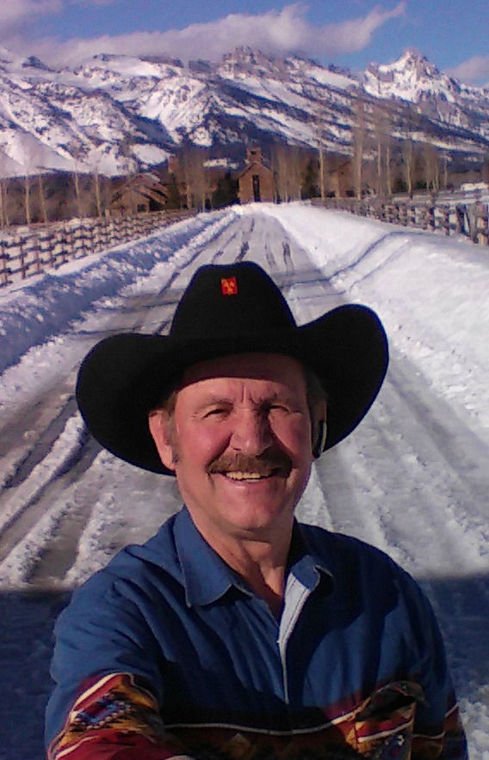Over a lifetime of dealing with federal land agents, I’ve come to the conclusion that their bureaucratic system discourages common sense.
At the White Creek trailhead, 20 miles up Greys River, there is a turnaround spot which is popular for camping in summer and fall. There is no outhouse there, and if nature calls you go into the bushes to do your duty. You bury yours, but others are not so considerate. The area is a health hazard and an eyesore. So I suggested to a Boy Scout that he approach the Forest Service (FS) about digging and constructing an outhouse as an Eagle Project. He was turned down because the FS said it wouldn’t meet government standards which required an Environmental Assessment, a cement reservoir, chemical treatment, and annual pumping. So a common-sense solution to a problem was nixed by government regulations. A simple wooden outhouse over the top of a 4’ wide by 6’ deep hole would have been adequate for many years. And it would solve a health hazard. Without the proposed outhouse a heavy rain washes bacteria and potential disease into the watershed.
Continuing up that same canyon, past the barrier at the trailhead, was an old logging road which went about seven miles to the back of White Creek. The road had overgrown with vegetation and small trees. It had become a beautiful trail, perfect for a leisurely horseback ride. I had a summer FS permit at the time. This was my favorite place to take guests. The scenery was spectacular and the trail was easy and safe. One summer, without warning, heavy equipment tore out the old culverts and removed an old bridge. A monster caterpillar with a double ripper tore huge gashes all down the old road, destroying the trail. Berms were constructed every couple hundred yards which were four feet high, allegedly to divert water runoff. How deep does rain water run? Several small creeks had formerly trickled under the old road through culverts. The backhoes and caterpillars dug thirty feet down, ripped out the culverts, and smoothed the sides of their excavation. The creek cut a ravine at the bottom. Removing the culverts proved to be downright dangerous. My horses had to be urged to go down the steep hill and cross the ravine. Some horses leaped over it, unseating the riders. With the old bridge over White Creek removed, we now had a hazardous creek crossing. Trail disruption by caterpillar rippers made for a very difficult ride.
I stormed into the FS office, demanding why this was done. They had decided to ‘decommission’ the old logging road. There was no public notice, no public input, and Permittees were not notified. I argued that if a private individual had destroyed natural landscape and vegetation, as the FS had done to that area, we would be in chains and thrown in the dungeon. A delegation from Star Valley including elected officials, Forest Service, outfitters, and general public who used the trail, took an inspection ride. The FS admitted they had gone overboard in ‘decommissioning’ the trail. Too late. The damage was done. Twenty years later that area still hasn’t recovered from that horrible razing. No one in the FS suffered any consequence for their misguided actions.
During the time I took guests on horseback, Off-Road Vehicle (ORV) use increased on the forest. Certain routes were designated for ORV use. But ORV aficionados didn’t always stay where they belonged. “No Vehicles” signs at some trailheads would disappear. Some ORV user had removed it so he could ‘innocently’ claim he hadn’t seen a sign. I would tie my horse and go out into the bushes, find the sign and replace it. The FS admitted they couldn’t adequately monitor all trails to insure compliance. The fine for a first offense was only fifty bucks, so ORV users simply risked getting a ticket.
I told the FS how to solve the problem. “First, hang all the signs in trees high enough that it would take a ladder to get to them. That alone will reduce sign disappearance to almost nothing. Second, rather than put ‘ORV Closure’ signs on numerous prohibited trails, put ‘ORV Route’ signs on the authorized trails. Third, put a prominent sign at the entrance to Greys River Road, and every few miles up Greys River, reading, ‘ORV use restricted to trails plainly marked ORV Route. Violation punishable by up to $1,000 fine and confiscation of vehicle.’ Of course that punishment would not be for the first offense, but most people don’t know that and the sign would eliminate 95% of the violations.” My proposal was too simple for a government bureaucrat. It takes a cowboy to come up with a common-sense solution.
I could go on and on about lack of common sense management I saw as a permit holder to use FS and BLM land, but these will suffice. Hopefully my gripe about these things will inspire some of our public servants to apply some common sense to their actions. And they need to be held accountable for their mistakes.
Remember, “Life is always better when viewed from between the ears of a horse.”

